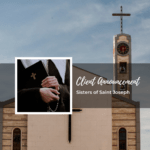My focus in this article is on something I like to call “the best problem ever.” It’s the year-end rush in which all of us in the world of fundraising shift into overdrive and stay there for months. It’s the time of Giving Tuesday and fall signature events, of annual Board solicitations and special Thanksgiving stewardship—and of the most important donor mailings and e-mailings you’ll do all year.
The reason all of this is a problem is because it places understandable stress on you and your team. The reason it’s the best problem you could possibly have is that all your work is going to bring in a flood of gifts.
In fact, national surveys of nonprofits show that 50% of them receive half or more of all their contributions in the last quarter of the year. About 30% get a majority of all their gifts in December alone. And 12% get most of their gifts in just the last three days of the year. Who can complain about being smothered in mail when so much of it is full of money?
Given these numbers, it’s clear that your effectiveness in planning and managing your year-end giving program is essential to the success of your development efforts as a whole. With this in mind, I would like to share some hard-earned advice on making your year-end great, specifically focusing on three areas: proactive preparation, mid-stream course correcting, and tailored stewardship.
Some of these suggestions can help you right now, while others may need to wait till next year. I can assure you, though, that none will go out-of-date.
Preparation Is Everything
When it comes to end-of-year fundraising, the name of the game is getting ready. When the rush of the season is in full swing, you will inevitably find there’s not enough time to do everything you want and need to. The answer is to do as much as humanly possible in advance.
Start by focusing on your data. Run AddressFinder or work with your mail vendor to update your addresses on file. Identify any contacts that are missing addresses, salutations, or other key fields. Review and remove inactive records. Update old gift codes with new ones. And prep your database to generate your custom letters and record appeals as they go out.
Next, think about stocking up on supplies like letterhead and labels, scheduling volunteers to help during your rush, and preplanning with vendors. Also, take this time to write your acknowledgement letters. They will be more meaningful and better crafted if you focus on them when you have the time, and you will be grateful later on you did it.
In fact, I would suggest that you think of all this planning ahead as a way of being kind to your future self. It will help you get motivated—and it’s true.
Metrics and How to Use Them
If you prepare well, you won’t have to worry about the logistical issues of year-end operations when the time comes. That will free you up to worry about something more important: the numbers that show you in real time how well your giving program is doing.
Each week—and not on Friday—run reports that will tell you the number of gifts each of your appeals has brought in, the average size of these gifts, the response rate for each appeal, and the rates of upgrades and downgrades. (This is for starters. You may have other KPI’s that are important or the results of version testing to track, etc.)
As you review your reports, your key concern, of course, is whether your efforts are producing the results you want. You will also want to ask some more specific questions: Have all my $1,000 donors renewed? Am I doing as well as expected in retention? Are any particular tools working better or worse than expected?
The reason to ask these questions is because you can use the answers to guide mid-stream course corrections. Have your executive director call those $1,000 donors at risk of lapsing. Plan an extra solicitation to make up for the one that underperformed. Or take that message that worked so well and reprise it in your last appeal of the year. Every insight you gather can help you strengthen your approach in the long term—but many can help you right now too.
Strengthening Stewardship
One of the most frequently overlooked opportunities for impact at the end of the year relates to stewardship—the idea of taking standard and expected donor acknowledgments to a new level. One way to do this is with thoughtful messaging that expresses your donors’ impact in fresh, memorable ways. Another is by tailoring your contacts with donors in a way that show them how much they matter to you.
You should be acknowledging those individual who have just given for the 5th, 10th or 15th consecutive year. You should think about tracking and recognizing donors’ cumulative contributions—the person, for instance, who’s just hit $10,000 in lifetime gifts. And you should be looking for events like significant gift increases. A $500 gift may not be in a leadership category for your organization, but if it’s from someone who always given $50 in the past, it’s certainly significant to them. Think of the impact of a quick call to that person to express your delight and gratitude.
Looking Ahead
Of course, every year end comes with a new beginning too. Even before the dust has fully settled on 2020, it will be January 2021, time to plan a year’s work—and to draw on all the lessons you’ve learned. This is when you will have the chance to look patiently and in depth at the trends to be found in your gift reporting, and gather feedback from everyone involved. When it’s time for your next year-end rush, you will be glad you did.




